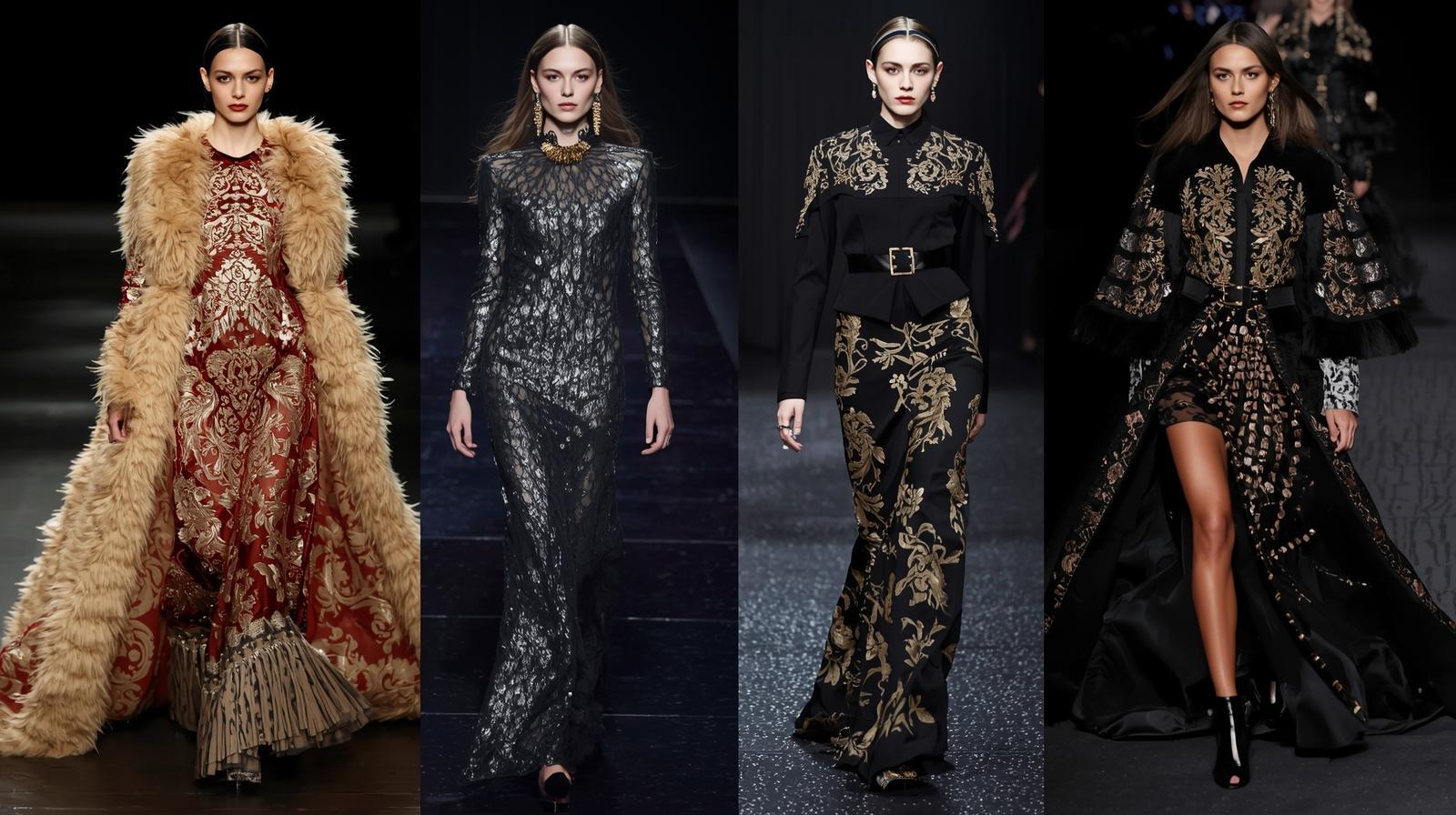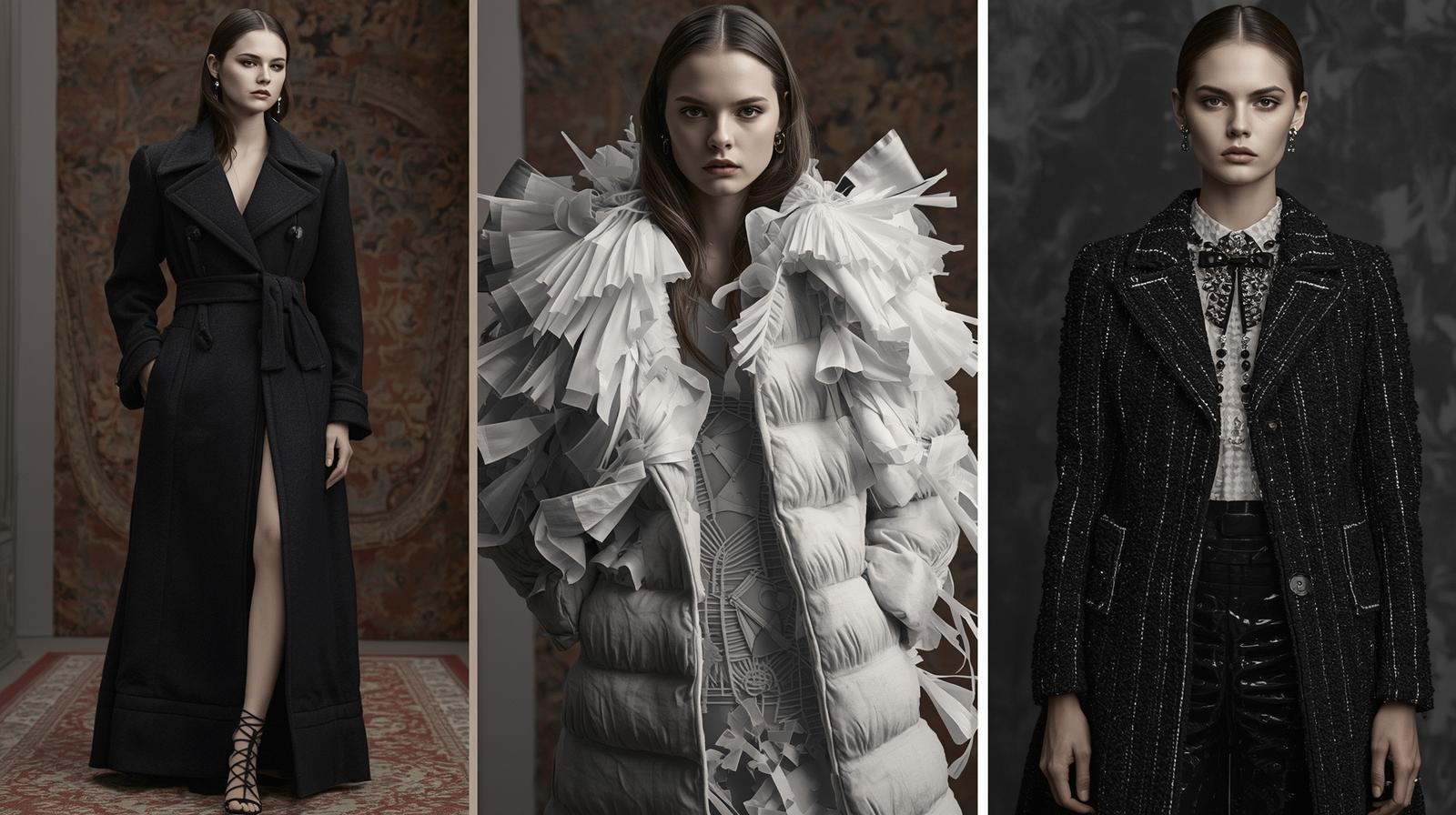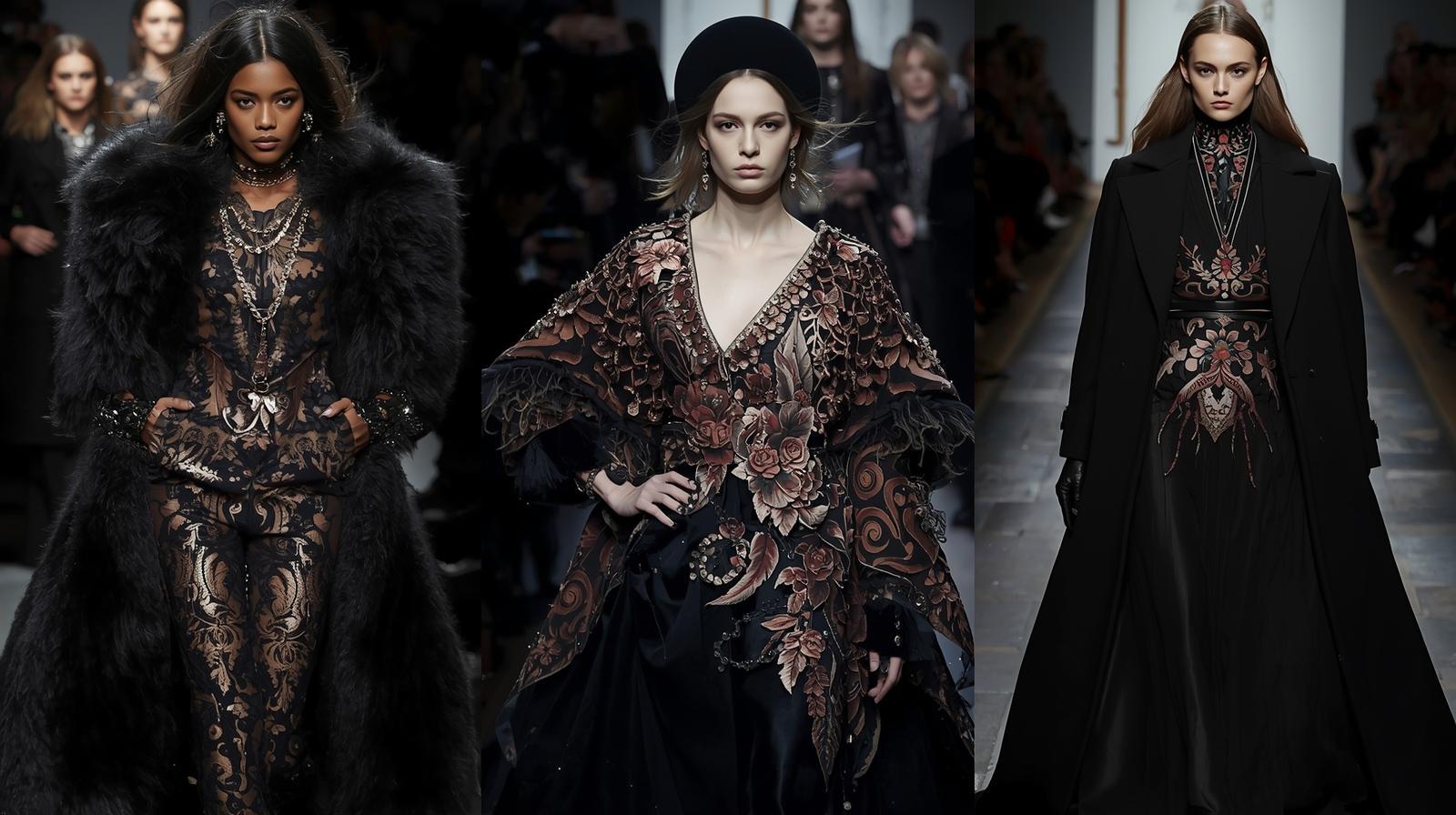26th Sep 2025
10 Steps To Mastering The Opera Coat Resurgence In Runway Opera Fashion

There's a vibrant revival of the opera coat in contemporary fashion, making it a standout piece on runways. As you navigate this trend, your understanding of styling techniques and fabric choices will be imperative to elevate your wardrobe. This guide provides you with ten steps that equip you to confidently incorporate the opera coat into your outfits. From choosing the right materials to pairing with accessories, you’ll learn how to embrace this classic piece and make it a modern staple in your fashion repertoire.
Embracing the Opera Coat: Historical Context Meets Modern Fashion
Understanding the historical roots of the opera coat enriches your appreciation of its current revival. Originating in the 19th century as a symbol of luxury and status, the opera coat provided warmth and elegance to socialites attending evening performances. Today’s adaptation sees designers merging this classic silhouette with innovative fabrics and silhouettes, creating a striking balance between timeless appeal and modern style. You will find that this fusion celebrates fashion history and invites you to express your unique aesthetic with confidence.
The Opera Coat's Evolution: From 19th-Century Glamour to Contemporary Runway
Initially crafted for the elite attending operas, the opera coat has transformed dramatically through the centuries. Designers like Schiaparelli and Balenciaga have introduced avant-garde elements, whereas contemporary labels blend luxurious textures and bold colours. You’ll notice that today’s iterations often include oversized cuts and intricate detailing, resonating with the current trend of embracing individuality in high fashion. This evolution speaks to the coat's adaptability, ensuring its presence on modern runways.
The Cultural Significance of the Opera Coat in Fashion History
The opera coat epitomizes high society fashion, conveying wealth and sophistication throughout its history. Its association with the arts and cultural events has cemented its status as a fashion staple. At its peak, wearing an opera coat signified not just status but also sophistication and an appreciation for artistic expression, influencing generations of fashion designers and consumers alike.
Tracing the cultural roots of the opera coat unveils the garment’s role in shaping the perception of elegance throughout the decades. In the Victorian era, only the elite graced the opera houses donned in these luxurious pieces, which were often adorned with opulent fabrics and intricate embroidery. The wearer's societal status was highlighted by this connection to cultural hubs, which established a clear distinction between the upper classes and the rest of society. The opera coat also transitioned into avant-garde fashion in the 20th century, becoming a canvas for artists and designers to play with shape and material, thus further solidifying its significance in fashion history. Today, the opera coat serves as a dynamic statement piece, holding the rich narratives of its past while promoting modern aesthetics and personal styles.
Decoding the Opera Coat's Aesthetic: Key Elements of Design
The opera coat embodies a rare combination of elegance and drama, making it a staple in couture and contemporary fashion alike. This piece is defined by its sweeping lengths, luxurious materials, and intricate detailing, which together create an aura of sophistication. The resurgence of the opera coat in runway shows indicates that designers and fashion enthusiasts are renewing their appreciation for timeless elegance, which provides opportunities for bold statements and personal expression. Understanding the nuances of this garment will elevate your wardrobe and enhance your style narrative.
Fabric Choices: Materials That Define Luxury and Style
Your selection of fabrics for the opera coat directly influences its overall aesthetic and impact. Rich materials such as velvet, satin, and cashmere exude opulence, while silk adds a touch of fluidity and grace. Each choice not only enhances visual appeal but also dictates the coat's drape and movement. Sophisticated textures contribute to the garment's allure, allowing you to tailor your ensemble to different occasions, from lavish evenings to chic daytime events.
Silhouettes and Tailoring: The Importance of Fit in Upscale Fashion
The right silhouette and expert tailoring elevate the opera coat from mere clothing to a statement piece. Well-structured designs, whether A-line or double-breasted cuts, contour your figure and command attention, while tailored fits provide comfort and freedom of movement. Custom alterations can be invaluable, as they enhance proportions and the overall feel, allowing the opera coat to shine as a centrepiece of upscale fashion.
Paying attention to specific silhouettes, such as a dramatic kimono cut or a trench-style design, can significantly influence your personal style. Efforts in tailoring should focus on key areas: the shoulders, waist, and sleeve length, ensuring a polished look that flatters your body shape. Incorporating vintage elements, like fluttering details or statement collars, can also create a unique flair, making the opera coat not only a versatile wardrobe staple but also a reflection of your individual style ethos.
Influential Designers Reshaping the Opera Coat Narrative
Your understanding of the opera coat's resurgence hinges on recognizing the visionaries redefining this classic piece. Designers are infusing bold creativity into traditional forms, merging historical references with contemporary sensibilities. The opera jacket, once confined to formal occasions, now appears in streetwear and avant-garde collections, signalling a major cultural shift in fashion. Through innovative cuts, unexpected fabrics, and intricate detailing, these designers are redefining how you perceive elegance and functionality in outerwear.
Spotlight on Visionaries: Designers Leading the Charge
Leading the charge in the opera coat renaissance, designers like Gucci’s Alessandro Michele and Balenciaga’s Demna Gvasalia challenge conventions. Michele incorporates vibrant patterns and retro silhouettes, offering a playful homage to past eras, while Gvasalia introduces oversized proportions, emphasizing comfort without sacrificing style. Their work ignites conversation and encourages you to explore versatility in your wardrobe choices.
Signature Styles: How Each Designer Interprets the Opera Coat
Analyzing signature styles reveals how each designer brings a unique lens to the opera coat. Michele's designs often reflect maximalism, with bold textiles and elaborate embellishments that evoke theatrical grandeur. Conversely, Gvasalia embraces a more minimalist approach, focusing on clean lines and utilitarian details that highlight wearability. Designs from these leading figures illustrate the opera coat's adaptability, empowering you to experiment with both dramatic and subdued interpretations.
Each designer's distinct take on the opera coat showcases an array of possibilities. Michele’s creations frequently feature intricate embroidery and vintage fabrics, transforming the coat into a canvas for artistic expression. In contrast, Gvasalia opts for deconstructed silhouettes that challenge traditional forms, appealing to a modern audience craving both fashion and functionality. This contrast illustrates the opera coat's versatility, encouraging you to find your personal style within this evolving narrative.
Styling Strategies: Transforming the Opera Coat for Every Occasion

Mastering the opera coat's versatility requires strategic styling that aligns with your personal aesthetic and the occasion. This timeless piece can effortlessly transition from day to night, elevating any outfit with its dramatic flair and sophisticated silhouette. By combining appropriate accessories, layering techniques, and an understanding of fabric choices, you can adapt this luxurious coat to suit casual brunches or glamorous evenings out, ensuring you always make a statement.
Day-to-Night Versatility: Accessorizing for Any Event
Choosing the right accessories transforms the opera coat from a daytime look to an evening ensemble. For daytime outings, opt for casual flats and a structured tote to create a laid-back vibe. As you transition to night, switch to statement heels and a clutch for a refined look. Layer delicate jewellery or bold pieces according to your mood, allowing the opera coat to remain the focal point while effortlessly adapting to your style.
Layering Techniques: Building a Fashion-Forward Look with the Opera Coat
Enhance the opera coat's allure through innovative layering techniques that create depth and interest in your outfit. Start with a fitted base layer, such as a sleek turtleneck or tailored blouse, which complements the coat's volume. Accentuate your look with slim-fit trousers or a pencil skirt to balance proportions. Experiment with textures—pairing wool with silk or denim adds an unexpected twist, while layering statement pieces like a bold scarf or oversized hat injects personality. The key lies in maintaining a cohesive colour palette, ensuring each layer harmonizes to produce a chic, thoughtfully curated ensemble.
The Importance of Cultural Representation in Runway Opera Fashion
Cultural representation in runway opera fashion enriches the narrative surrounding garments, allowing designers to celebrate diverse heritages and histories. By incorporating elements from varied cultures, you can create pieces that resonate on a deeper level, inviting conversations about identity and belonging. The opera coat serves as a canvas for showcasing these influences, reflecting the global tapestry of fashion. You should embrace this diversity not only for aesthetic appeal but also to foster inclusivity within the fashion industry.
Global Influences: How Different Cultures Reimagine the Opera Coat
Different cultures offer unique interpretations of the opera coat, transforming its aesthetic and purpose. In Eastern fashion, for instance, vibrant textiles and rich patterns may take centre stage, while Western designers might opt for minimalist cuts elevated by luxurious fabrics. As you investigate this range, think about how regional customs and artistic manifestations can influence your designs, creating a blend that respects authenticity while pushing the envelope.

Keeping Up with Trends: Matching Opera Coats to Contemporary Social Movements
A designer's dedication to social justice is emphasized and opera coats become more relevant when they are in line with contemporary social movements. You can use concepts like body positivity or sustainability to make works that appeal to modern audiences. This alignment guarantees that the values and issues of contemporary society are reflected in your designs in addition to current fashion trends.
Opera coats that reflect contemporary social movements demonstrate your awareness of the ongoing changes in our world. For instance, the rising demand for sustainable fashion encourages you to select eco-friendly materials and ethical manufacturing processes. By advocating for inclusivity, you may design opera coats that cater to various body types, promoting confidence for all wearers. Such initiatives contribute to a transformative fashion landscape that prioritizes ethical considerations while remaining stylish.
Final Words
Drawing together the 10 steps to mastering the opera coat resurgence in runway opera fashion equips you with the insights needed to elevate your style. By understanding historical contexts, experimenting with layering, and embracing bold accessories, you transform the opera coat from a mere garment to a statement piece in your wardrobe. Adapting your style to your own aesthetic will improve your look and put you at the forefront of this fashion revival. Embrace the elegance, and let your opera coat become a symbol of your fashion prowess.

